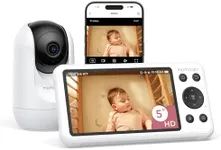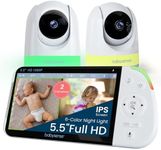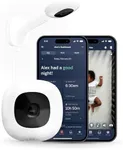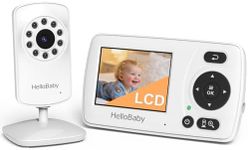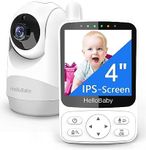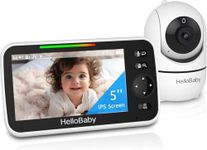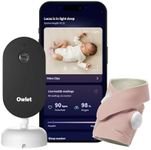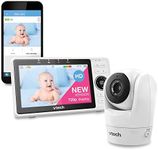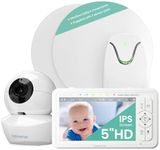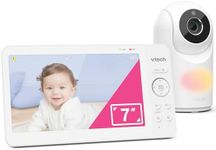Buying Guide for the Best Baby Monitors
Choosing the right baby monitor is crucial for ensuring the safety and well-being of your baby while providing you with peace of mind. A baby monitor allows you to keep an eye or ear on your baby from a distance, which is especially useful when you're in another room or need to step out for a moment. When selecting a baby monitor, consider the features that will best suit your lifestyle and the specific needs of your family. It's important to balance between the essential features and any additional functionalities that might enhance your monitoring experience.Type of MonitorBaby monitors come in two main types: audio and video. Audio monitors allow you to hear your baby, while video monitors let you see and hear them. Audio monitors are generally simpler and more affordable, making them a good choice if you only need to listen for your baby's cries. Video monitors provide a visual feed, which can be reassuring for parents who want to see their baby at all times. Consider your comfort level and whether you prefer to have a visual check on your baby when deciding between these types.
RangeThe range of a baby monitor refers to the maximum distance over which the monitor can effectively transmit signals between the baby unit and the parent unit. This is important if you have a large home or plan to use the monitor outside, such as in the garden. Short-range monitors are suitable for smaller homes or apartments, while long-range monitors are better for larger spaces. Assess the size of your living area and where you plan to use the monitor to determine the range you need.
Battery LifeBattery life indicates how long the monitor can operate before needing a recharge or battery replacement. This is crucial for ensuring continuous monitoring, especially overnight or during naps. Monitors with longer battery life are more convenient as they require less frequent charging. If you plan to use the monitor extensively or in areas without easy access to power outlets, opt for a model with a longer battery life. Consider your daily routine and how often you can recharge the monitor when evaluating this feature.
Night VisionNight vision is a feature in video monitors that allows you to see your baby clearly in low-light conditions or at night. This is important for monitoring your baby without disturbing their sleep by turning on lights. Monitors with good night vision provide clear images even in complete darkness. If you want to keep an eye on your baby during the night without entering the room, ensure the monitor has reliable night vision capabilities. Think about your monitoring needs during nighttime when considering this feature.
Two-Way CommunicationTwo-way communication allows you to talk to your baby through the monitor, which can be soothing for them and convenient for you. This feature is important if you want to comfort your baby from another room or communicate with a caregiver in the nursery. Monitors with this feature enable you to interact with your baby without being physically present. If you value the ability to reassure your baby with your voice or need to coordinate with someone else in the room, look for a monitor with two-way communication.
Additional FeaturesSome baby monitors come with additional features like temperature sensors, lullabies, or motion detection. These can enhance the monitoring experience by providing extra information or soothing options. Temperature sensors alert you if the room becomes too hot or cold, while lullabies can help calm your baby. Motion detection can notify you of any unusual movements. Consider which of these features would be beneficial for your specific situation and whether they align with your parenting style and needs.
